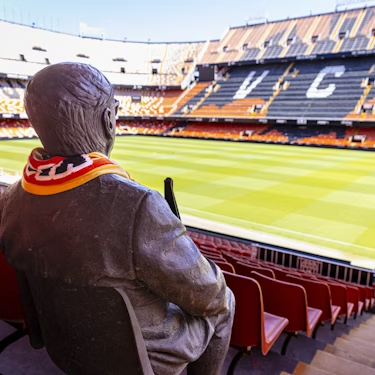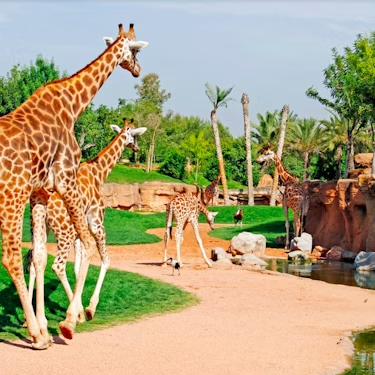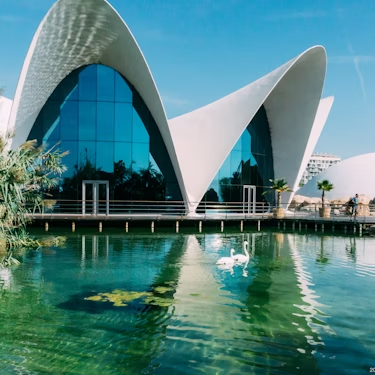More about: Valencia in 2 Days: everything you need to know
2 days in a place may seem insufficient to enjoy everything there is to see in that place, and if we are talking about a city like Valencia, even more so. However, with a good logistical organisation it is possible that in such a short time you can get to know a large part of the best things to see and do in Valencia. At least from a tourist and traditional perspective in which it is interesting to see the most important historical buildings and monuments of the city.
So I invite you to continue reading this compilation of plans and activities that I have prepared for your two days in Valencia. This way you will have perfectly coordinated entertainment alternatives so that you can have two days of great fun. You will also be able to return home knowing that you have visited some of the most important places in the largest city in the Valencian Community.
Day 1: Marvel at the city centre

Valencia is the capital of the Spanish autonomous community of the same name and if you take into account its metropolitan area then it is ranked as the third largest urban settlement in the country behind Madrid and Barcelona. It is an important academic centre for Spanish university life and is a tourist epicentre for those who come to the country in search of a good combination of the Mediterranean Sea and the cosmopolitan way of life of Spanish cities.
On the first day of your visit to this beautiful city it is a good idea to take a stroll through the streets of its geographical centre. The truth is that in this area you will find most of the most important historical buildings, many surprisingly beautiful neighbourhoods and, for many, the essence of what distinguishes Valencia from other Spanish destinations.
So, with your interests in making the most of every moment of your day in mind, I have coordinated a series of activities in a specific order that will allow you to enjoy your short stay as if you were spending a whole season wandering the peculiar and captivating streets of Valencia.
Have breakfast in the Plaza de la Reina and then visit the cathedral
is one of the most important places in this place. It's a good place to have breakfast on the first day of your visit, as there is enough commercial activity in the area to give you several alternatives to choose from. I would highlight Terraza de Santa Catalina and Bertal Homenage as two good options among the local offerings.
In turn, when you have finished breakfast you can walk north across the square to reach the beautiful Valencia Cathedral. You will be arriving from the south façade and so you may be interested in seeing its impressive north front, but first you might want to make a point of climbing the 200 steps of the Micalet. This is a tall gothic style bell tower with an octagonal structure from where you can enjoy panoramic views of this section of the city.
The interior of the Chapel of the Holy Chalice is another great spectacle of architecture and if you want to see the church from the best possible perspective you need to get to the Plaza de la Virgen. This is a very pretty place in its own right where you can also see the Royal Basilica of Our Lady of the Forsaken. Bear in mind that if you are arriving early in the city you can book a private transfer from Valencia airport to the centre so that you can get straight to this area without having to waste time going through your accommodation first.
- Location: Pl. de l'Almoina, s/n, 46003 València, Valencia, Spain.
- Prices: The price to enter the cathedral per person is approximately 2 euros. Bear in mind that this gives you access to the Micalet.
- Opening hours: it changes throughout the year according to Catholic holidays, but on average it is open from 10 am to 6:30 pm every weekday. Except on Sundays when it opens at 2 pm.
Stop by the Lonja de la Seda (Silk Exchange) and go shopping at the Central Market
If you head south from the Plaza de la Virgen through the narrow streets of this section of the historic centre you will reach the Lonja de la Seda (Silk Exchange) in less than 6 minutes. This building is of great historical importance to this city, as it is the historic site where commercial transactions took place during the Valencian Golden Age. Its architectural beauty is so significant that this building has been declared a World Heritage Site by Unesco.
The exterior of the building is a real spectacle, but the most important thing is the internal lobbies, which are the maximum representation of Valencian Gothic architecture. It is therefore a good idea to quickly visit the halls of this great structural complex before continuing on to the next stop on your visit. This commodities exchange is located right in front of the Market Square. This means that the Central Market of Valencia is just across the street.
This beautiful modernist building, distinguished by its impressive main façade, is an excellent place for you to have a shopping session of the best Mediterranean products. As well as the best preparations from the fertile agricultural region of the Valencian Community.
In fact, it is very likely that these two sites, together with the cathedral and its famous tower, are part of the guided tours of the essential sites of Valencia. For indeed, they are in the historic heart of the city and in the district where most of the UNESCO-declared heritage sites are located.
Go to the Palace of the Marquis of Dos Aguas

When you start walking west from the Central Market to the Palacio del Marqués de Dos Aguas you will have created a virtually perfect square route in the centre of Valencia. Which is ideal, knowing that the idea is to take advantage of the walks to get to know the characteristic beauty of the area.
When you get to this place you will notice that the beautiful Valencian architecture is an inexhaustible resource. The fact is that this is an old mansion that stands out for its façades with a very marked rococo style, crowned by imposing towers that create the perfect setting next to the entrance covered in alabaster marble.
If you wish, you can visit the museum dedicated to ceramics, which is located inside. This is an excellent idea, as the façade of the structure is only a small part of the decorative universe that defines this important building.
Keep in mind that many of the best Segway tours in Valencia follow a route quite similar to the one you would have taken up to this point in the day. Therefore, they can be a good option if you are not interested in entering any of the sites mentioned above, nor do you like the idea of walking.
- Location: this palace is located in the historic centre of Valencia, between the streets Poeta Querol, Calle de la Cultura and Calle de San Andrés.
- Entrance fee: The entrance to the museum costs approximately 3 euros per person.
- Opening hours: usually open from Tuesday to Saturday from 10 am to 2 pm and then reopen from 4 pm to 8 pm. On Sundays and public holidays it is open from 10 am to 2 pm and closed on Mondays.
Have an authentic Valencian paella for lunch.
By early to mid-afternoon it's very likely that your appetite will already be eating away at your good mood. So after visiting this picturesque mansion it is extremely appropriate that you dedicate yourself to enjoying an authentic Valencian paella at some of the best nearby restaurants in this tourist district which is packed with gastronomic establishments.
Less than 200 metres away, on Calle del Mar is La Riu, a beautiful family-run tavern with typical Valencian décor where you can enjoy traditional and authentic versions of paella, the signature dish of this Spanish region. Here you can also accompany your meal with an excellent repertoire of regional wines.
On the other hand, if you are interested in a slightly more innovative and conceptual approach then it is preferable to go up to Calle de la Paz and then down Calle de en Sala to the LAVOE restaurant. This is an establishment specialising in paellas and fideuá under a more modern concept. Which for many food critics makes it one of the best and most elegant rice restaurants in this section of the city.
Keep in mind that enjoying a good paella is one of the best things to see or do in Valencia in summer. Although this is really something you can't miss no matter what time of year you visit the city.
Head north to the Turia Garden
The Turia Garden is one of the most beautiful urban parks in Spain and is a cultural and urban axis of great importance for the city of Valencia. When visiting this city, it is essential that you walk through some of the stretches of this kilometre-long public space. For this reason, it is a good idea to head towards the Puente del Real from either of the two paella restaurants I have mentioned after lunch.
Bear in mind that the idea is to walk from the bridge to the northern end of the park where the Serranos Bridge is located, as this way you can walk through a large part of the park and go straight to the Serranos Towers. These are two monumental towers of Valencian-style Gothic architecture that belonged to a medieval wall and offer you a panoramic view of the area.
This is an ideal place to catch the sunset and you have to appreciate the fact that the previous walk in the Turia Garden is one of the best things to see or do in Valencia with children. Since it is a space that allows them to play freely to drain all the energy they have possibly contained for the other more adult activities of the tourist itinerary.
End the day in the bars of Barrio del Carmen
The Barrio del Carmen is an old district that is geographically contained between the Turia Gardens, the Serranos Towers and the Quart Towers. It is characterised by its narrow streets, the medieval style of some of its buildings and the wide variety of nightlife establishments ranging from bars and nightclubs to cafés, restaurants, bookshops and dozens of terraces.
It is an emblematic place among the Spanish nightlife scene and is currently one of the most bohemian neighbourhoods in the city. As a result, it's a good idea to take a stroll through its streets, especially Calle de los Caballeros, to start a day of partying in moderation, so that the hangover doesn't take its toll the next day.
As you can imagine, some of the best bar routes in Valencia run through these streets. So booking these types of guided tours might be a good idea if you feel this is a better way to enjoy the area on the terms and traditions of the locals.
Day 2: Continue getting to know Valencia

For the second day of your visit to Valencia there will still be a couple of important places to visit and for this reason it is important that you adjust your energies and your willingness to follow the itinerary that I have also prepared for this second occasion.
And it becomes a priority for you that after a day getting to know so many architectural wonders of Valencia's past you can also see other more modern and recent sites. Which have to do with the relevance that this beautiful city has taken on since the middle of the 20th century until now in the 21st century.
Start the morning at the unmissable City of Arts and Sciences
The City of Arts and Sciences is an impressive work of modern architecture designed by Santiago Calatrava that has reshaped the image associated with Valencia. For it is a thoroughly modernist landscape that to some even looks like a science fiction film.
On this site there are several individual buildings that serve very different purposes. There is an IMAX screening room, a park, an interactive science museum, a planetarium and a space dedicated exclusively to the performing arts.
If you want, you can walk around on your own, but a guided tour that also includes a wine and tapas tasting is a great way to start the day while getting acquainted with one of the most controversial and revolutionary architectural projects of recent times in Spain.
Then stroll through the streets of the Ruzafa neighbourhood
Once you have completed your visit to this iconic site of Valencia's new urban reality, it is a good idea to head back to the city centre, specifically to the Ruzafa neighbourhood.
It is an almost perfect triangle that contains within it one of the city's greatest cultural diversities with European, Asian and American communities living in harmony in one of the most fashionable neighbourhoods in Valencia's tourism scene for over a decade.
A good activity to occupy your time here beyond sitting in a café or restaurant is to take part in a seafood paella workshop along with a guided tour of the Ruzafa Market. This is highly recommended, as you'll be making the most of your time and returning home with a greater amount of knowledge than you had when you started your trip.
Take the opportunity to visit the Estación del Norte and the Plaza de Toros in Valencia

When you visit the streets of Ruzafa, it is essential that you go to the northern end of the neighbourhood so that you can see the beauty of the Estación del Norte and the neighbouring Plaza de Toros de Valencia from the outside.
If you wanted to, you could enter both sites, as the station is now a working tourist destination for architecture fans and the bullring is a must-see. In fact, in the second alternative there is a museum that you could quickly walk through depending on your energy and interests.
Keep in mind that both places are inseparable stops on the routes of the best tours of Valencia. Which is logical knowing that they are iconic spaces of the cultural identity of this city.
- Exact location: the bullring is located at Calle de Xàtiva, 28, 46004 València, Spain. The station is located just in front of its western façade.
- Admission prices: the station is free, while the bullring is free depending on which event is closest to the date of your visit. The bullfighting museum in the bullring costs approximately 2 euros per person.
- Opening hours: the station is open daily from 5:30 am to 11:59 pm. The bullring has changing opening hours, but is usually open from 10 am to 7 pm every day of the week.
End the day with dinner at the Mercado de Colón
As a good dinner is always an excellent idea to celebrate, it is advisable to head to the Mercado Colón to get to know this early 20th century market which today has one of the largest varieties of gastronomic offerings in the city.
This place has become so influential in the city's culinary world that it is often an essential stop on the best gastronomic tours of Valencia. In fact, it is also advisable to join an experience like this if you feel like walking around the rest of the city.
- Exact location: C/ Jorge Juan n.º 19, Valencia.
- Admission prices: Colon Market is free to enter all year round.
- Opening hours: Open every day of the week from 7.30am until 2am. On Fridays it is open until 3am.




